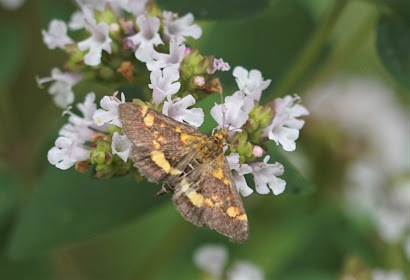I was at Cranford Park yesterday primarily to do the UKBMS butterfly count, but also to see what was around. Late August is always good for migratory birds at Cranford Park and I hit the jackpot twice yesterday, but first back to the butterflies.
I had a healthy count and species numbers were about average for this time of year ….
26/08/2020
Large White x 9
Small White x 3
Small Copper x 3
Brown Argus x 1 (first of the year)
Holly Blue x 3
Red Admiral x 5
Speckled Wood x 3
Gatekeeper x 3
Meadow Brown x 10
Small Heath x 3
 |
| Large White |
 |
Red Admiral |
In the cattle paddock and meadow I was really chuffed to spot two Whinchats and a solo Wheatear.
Whinchats don't breed at the park but I often see them during early autumn as they stop over to feed up before continuing their journey to central or southern Africa to spend the winter. They spend the summer breeding in northern and western Britain where there are more suitable habitats.
Wheatears also spend the winter in Africa and just like the Whinchat, I have seen them before at Cranford Park during early autumn. They are slightly bigger than Whinchats but just as attractive.
 |
| out of focus Wheatear at the back and Whinchat at the front |
 |
| Whinchat |
 |
| Whinchat |
 |
| Whinchat - female |
 |
| Whinchat |
 |
| Whinchat |
 |
| Whinchat in typical 'topping' mode |
 |
| Whinchat |
 |
| Wheatear - female |
 |
| Wheatear |
 |
| Wheatear |
 |
| Wheatear |
 |
| Wheatear |
The girls in the cattle paddock, as usual, showed little interest in what I was doing …
and they are often followed around by a flock of Starlings. This young juvenile below stood out from the rest with it's very pale colouring …
Elsewhere in the park there were plenty of Southern and Migrant Hawkers, and lots of Common Darters, including the one below that not only posed for me at eye level but also allowed me to get quite close …
Some of the young Oaks dotted around the park already have acorns affected by the Knopper Gall Wasp. These tiny wasps lay their eggs inside very young growing acorns and the grubs feed inside. You can tell easily an affected acorn, but they don't really do too much harm to the tree in general. In early August the acorn is red, ridged and sticky and eventually turns brown and hard.
Another tiny wasp that likes Oaks is the equally tiny Common Spangle gall wasp, and they've caused these red raised circles on the underside of this oak leaf. A single leaf can hold as many as 100 galls and even when they have fallen to the floor, the larvae continue to develop throughout the winter and emerge as adults in April …
The huge Sweet Chestnut tree near the carpark is absolutely laden with fruit now, and looks spectacular ….
In the woods I found my first fungi of the season. I think this is one of the Oyster mushrooms but I'm not 100% convinced …
One of the young female Kestrels was loitering by the Information Centre and completely unconcerned by me pointing my camera at her …
Back at the Lockdown Loftroom, there have been a couple of juvenile Red Kites hanging about the tall trees at the back of the field. They're not easy to photograph due to the distance but can you spot them both in the photo below ?
The old male Muntjac was visible the other day in horrendous weather conditions. His new stubby antlers have grown well over the last couple of months, and although he still has that awful abcess on his hind leg, he still appears healthy and is eating well …
A young Sparrowhawk visited the neighbours Oak Tree last week and I took loads of photos as it perched at almost eye level to the Lockdown Loftroom window. One of the Great Spotted Woodpeckers that visits the Birch tree, stayed completely still the whole time the hawk was perched ….
So a very interesting and rewarding visit to Cranford Country Park, and some nice recent experiences from the Lockdown Loftroom.















































